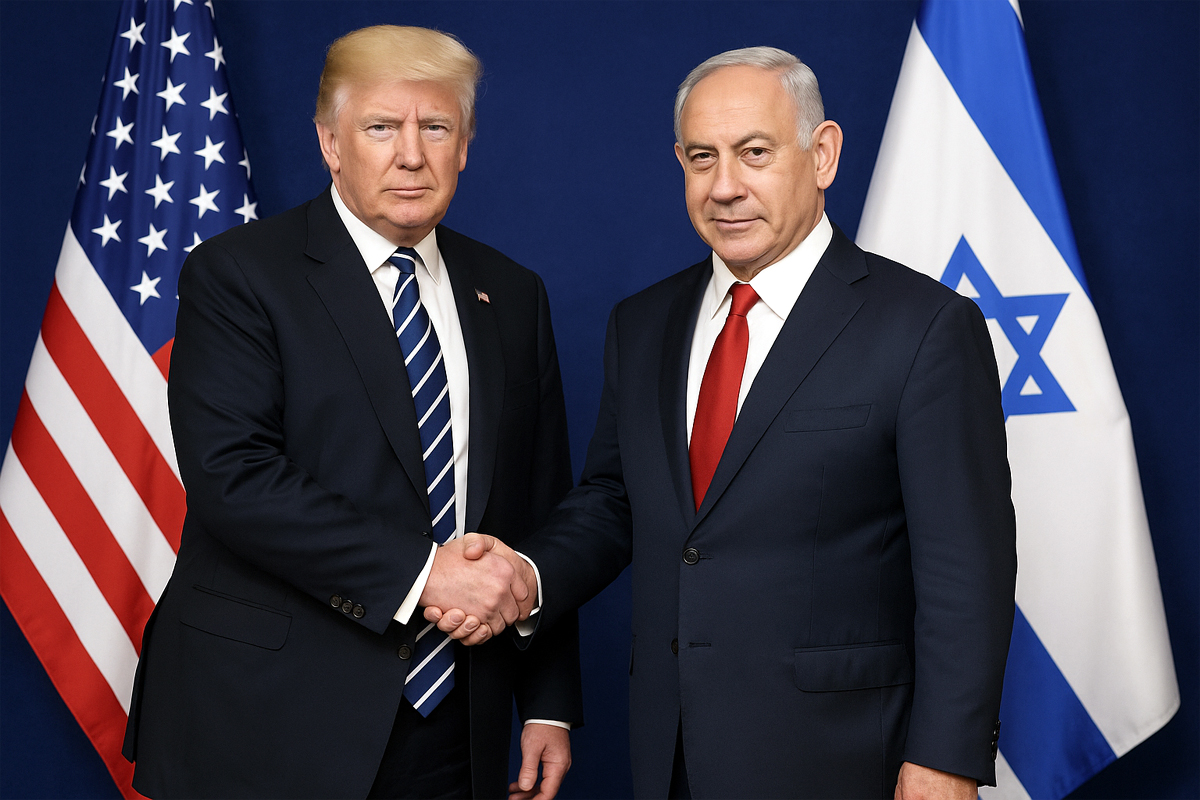 Donald Trump and Benjamin Netanyahu, as part of the new phase of the peace agreement and the release of hostages. Image obtained with Artificial Intelligence.
Donald Trump and Benjamin Netanyahu, as part of the new phase of the peace agreement and the release of hostages. Image obtained with Artificial Intelligence.A high-profile, short-term visit
U.S. President Donald Trump will arrive in Israel tomorrow for an official visit that will last approximately four hours. He is scheduled to arrive at Ben Gurion International Airport at 9:20 a.m. local time, where he will be greeted by Prime Minister Benjamin Netanyahu and senior Israeli officials.
The agenda will include a speech before the Knesset plenary session and a private meeting with the families of the Israeli hostages still held in Gaza. The visit comes amid a climate of cautious optimism following the ceasefire between Israel and Hamas, brokered by the United States and Egypt.
The political and humanitarian context
Trump seeks to consolidate US leadership in the new phase of the peace process. His visit to Jerusalem coincides with the first phase of hostage releases planned for in the ceasefire agreement and has strong symbolic value for both the Israeli government and the public.
According to diplomatic sources, the White House views this visit as a gesture of “guarantee of compliance” toward both parties, reinforcing confidence that the commitments made by Hamas will be closely monitored.
The Washington–Jerusalem–Cairo axis
After his meeting with Netanyahu, Trump will travel to Egypt to participate in a multilateral summit in Sharm el-Sheikh. Arab and European leaders are expected to attend, with the aim of advancing the reconstruction mechanisms and international oversight of the agreement.
Washington is seeking to consolidate a regional cooperation framework that will reduce tensions and strengthen coordination between Egypt and Israel, without neglecting the role of the United States as guarantor of the process.
A new diplomatic phase
Trump’s visit to Israel marks a turning point after months of conflict and complex negotiations. Beyond its brevity, the day is shaping up to be a political test: measuring the ability to sustain peace in a still fragile environment and to open a new chapter in the relationship between key players in the Middle East.
![]()
Post navigation